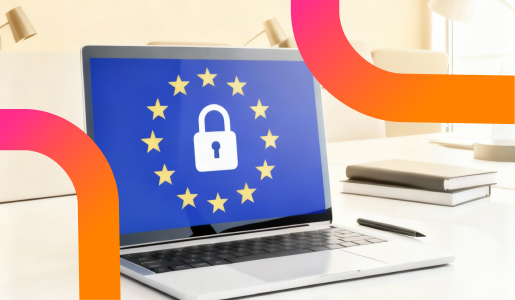At a time when technological innovation and digitalisation are rapidly transforming markets, ensuring transparency and accountability has become a cornerstone of digital trust. Governments and regulatory bodies around the world are striving to maintain fair and efficient market conditions by ensuring that pricing information is accurate, reliable, and compliant with established guidelines.
The Omnibus Directive (EU) 2019/2161, which came into force in 2022, requires e-commerce businesses to ensure full transparency: for every discount, they must be able to prove that the original price reflects the lowest price applied in the 30 days preceding the offer.
Yet in a context where data volumes are exploding and regulatory demands are tightening, how can businesses ensure reliable and continuous traceability?

Table of contents
- Strengthening consumer protection: the Omnibus Directive
- Timestamping: an effective solution for price compliance
- Understanding the mechanism of proving price compliance
- Penalties & enforcement of the Omnibus Directive
- Conclusion
Strengthening consumer protection: the omnibus directive
Introduced on May 28, 2022, the European Union implemented a robust regulatory measure known as the Omnibus Directive. This transformative directive significantly enhances the penalties associated with deceptive promotions, insincere reviews, and aggressive door-to-door sales.
The key objective of the Omnibus Directive (EU) 2019/2161 is to bolster the protection of consumers, particularly those reliant on digital platforms or marketplaces for their purchasing needs. In the rapidly growing digital economy, where the consumers often face challenges in ascertaining the credibility of products, services, or the marketplace itself, the directive provides a necessary safeguard.
The Omnibus Directive tackles three primary commercial practices that potentially compromise consumer rights, but today we are focusing in on the last of these: proving price compliance. Aimed at enhancing transparency in pricing, the directive forbids false promotions. Sellers must indicate the product’s price before applying a discount, which must correspond to the lowest price charged during the preceding 30 days. Continuous violation of this provision can result in a two-year imprisonment and a fine of €300,000.
These rules usher in a new era of consumer protection, where the onus is on businesses to maintain transparency and authenticity in their operations. Non-compliance isn’t just risky; it can potentially disrupt businesses and their reputation in the market.
Timestamping: an effective solution for price compliance
In this context, timestamping emerges as an efficient tool to prove price compliance. It involves recording the date and time of an event in a secure manner, providing an unalterable record.
For e-commerce businesses, applying timestamping to price changes can ensure adherence to the Omnibus Directive’s stricter rules on misleading promotions. The directive stipulates that the seller must indicate the product’s price before applying a discount. This previous price should correspond to the lowest price charged by the seller during the 30 days preceding the discount.
With timestamping, businesses can easily verify and demonstrate that the discounted price and the original price adhered to this rule. Timestamping can effectively prove that the original price was indeed the lowest price charged in the previous 30 days, thus preventing deceptive promotional practices.
Understanding the mechanism of proving price compliance
Timestamping, as a technology, leverages the principles of cryptography to provide a secure and accurate record of time for a specific event or transaction. Here’s a more detailed look at how it functions:
Hash function
When an event occurs, like a price change in an online marketplace, the details of that event are put through a cryptographic hash function. This hash function takes an input (or ‘message’) and returns a fixed-size string of bytes, typically a hash ‘digest’ that is unique to each unique input. It’s virtually impossible to reverse-engineer the original input from the hash digest.
Timestamp Authority (TSA)
This hash digest is then sent to a trusted third-party entity called a Timestamp Authority (TSA). The TSA generates a timestamp that includes the current date and time.
Digital signature
The TSA combines the hash digest with the timestamp and then uses its private key to sign this data, creating a digital signature. This signature confirms the TSA’s endorsement of the timestamp.
Return to originator
The digital signature, which now contains the original hash digest and timestamp, is returned to the originator and can be stored as proof of the event.
The digital timestamp proves that certain data (in this case, the price change) existed at a particular point in time. In the context of the Omnibus Directive, this timestamped record can prove that a price was changed at a specific time, thus ensuring that any price reductions meet the required 30-day lowest price rule.
The critical point is that the data linked to the timestamp cannot be altered; any changes to the data would produce a different hash digest. Therefore, the use of timestamping provides a highly secure, tamper-proof method of recording the time of an event or transaction. Its applications in e-commerce platforms ensure transparent operations, trustworthiness, and enhanced consumer protection.
Penalties & enforcement of the Omnibus Directive
Sanctions foreseen by the Omnibus Directive
The law provides for heavy fines and even prison sentences in the event of a breach of these rules, ensuring strict enforcement. The maximum fine for abusive clauses is now €15,000 for individuals and €75,000 for businesses. In cases of large-scale infringement, the fine can reach up to 4% of the company’s average annual turnover, calculated over the last three known financial years.
Enforcement of the Omnibus Directive: record fines
In France, in July 2025, the Direction générale de la Concurrence, de la Consommation et de la Répression des fraudes (DGCCRF, French equivalent of Competition and Markets Authority (CMA)) imposed a record fine of €40 million on Shein for misleading commercial practices, including fake discounts through prior price inflation and false environmental claims.
At the same time in Spain, the Ministerio de Derechos Sociales, Consumo y Agenda 2030 fined seven e-commerce companies for simulating promotions during Black Friday 2023 by raising prices before applying discounts, with total fines amounting to nearly €350,000.[2]
These actions clearly illustrate the strengthened enforcement of the Omnibus Directive, which demands full transparency on “discounts”, and show that European authorities are no longer turning a blind eye to such practices.
Conclusion
Compliance with the Omnibus Directive is essential for businesses seeking to protect their reputation and maintain customer trust. Through timestamping, companies can demonstrate their commitment to transparent commercial practices, thereby enhancing consumer protection.
Today, integrity and transparency have become non-negotiable requirements in the digital economy. By adopting innovative solutions such as timestamping, businesses gain concrete evidence of their compliance with regulatory obligations, strengthening their credibility in the marketplace.
In the context of the Omnibus Directive, timestamping is more than just a technical tool: it is a practical response to the challenges of compliance and price transparency in the digital era.
References
[1] https://www.economie.gouv.fr/dgccrf/laction-de-la-dgccrf/les-sanctions/fast-fashion-lenseigne-shein-sanctionnee-pour-une#:~:text=La%20soci%C3%A9t%C3%A9%20Infinite%20Styles%20Ecommerce%20Limited%20a%20%C3%A9t%C3%A9%20sanctionn%C3%A9e%20d,d’information%20sur%20732%20produits.
[2] https://www.dsca.gob.es/es/comunicacion/notas-prensa/consumo-sanciona-siete-empresas-falsas-rebajas-durante-black-friday
Disclaimer
The opinions, presentations, figures and estimates set forth on the website including in the blog are for informational purposes only and should not be construed as legal advice. For legal advice you should contact a legal professional in your jurisdiction.
The use of any content on this website, including in this blog, for any commercial purposes, including resale, is prohibited, unless permission is first obtained from Evidency. Request for permission should state the purpose and the extent of the reproduction. For non-commercial purposes, all material in this publication may be freely quoted or reprinted, but acknowledgement is required, together with a link to this website.



